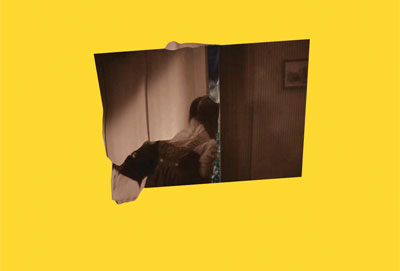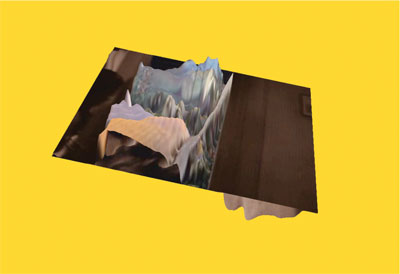

In the twenty years that Michael Joaquin Grey has been exhibiting, critics have often employed phrases like “back to basics” and “building blocks” to describe his interest in the conventions dictating the representation of concepts that form the foundation of human knowledge. An exhibition of Grey’s new and old work currently on view at P.S.1 includes a drawing that distills his approach: an outline of an infant playing with two red blocks is the image of a nascent mind grappling with the concept of one plus one. A larger drawing on an adjacent wall reuses the red squares to demonstrate the meaning of prepositions—above, under, behind, etc.—like a diagram in a grammar textbook. Object as preposition (1988-2007), also uses orange circles, a colored form that appears several times in the gallery. The fruit suggested by an orange round is a favorite symbol for Grey (his web site is www.citroid.com). Perhaps it’s because the tautology of the object’s name and the color that describes it produces a conundrum: a schematic picture of an orange is both an abstraction and a concrete representation. The repetition of the orange (or just orange, with no definite article) forces viewers to struggle with the same problem that Grey does: even at the most fundamental level, our descriptions of the world are frustratingly paradoxical and slippery.
Lean, instructional-pamphlet drawings dominate the first of the show’s two galleries; Perpetual ZOOZ (Madonna and Child) (2005-2009), a video projected in the second, darkened room, looks Baroque by comparison. In Grey’s “computational cinema,” The Wizard of Oz plays on both sides of a square that spins against a yellow field. The characters and scenery of the family classic throb in three-dimensional ridges that visualize the rumbling soundtrack, the heartbeats of the artist and his mother. Here Grey dispensed with the anonymity of monochromatic geometry in favor of a popular film, to make his manipulations of the material more vivid. Several other reasons for his use of Oz come to mind. The film’s associations with the comforts of childhood resonate with the tenderness of mother-son heartbeats. The palindrome of “Oz” written forward and backward can be easily recognized when flipped, like a double of the square in the video, and also builds a false etymological link to Grey’s earlier modeling project, Zoob. And the heartbeat’s position as the engine of dramatic action makes the bold hypothesis that human biology is driven by narrative impulse.

